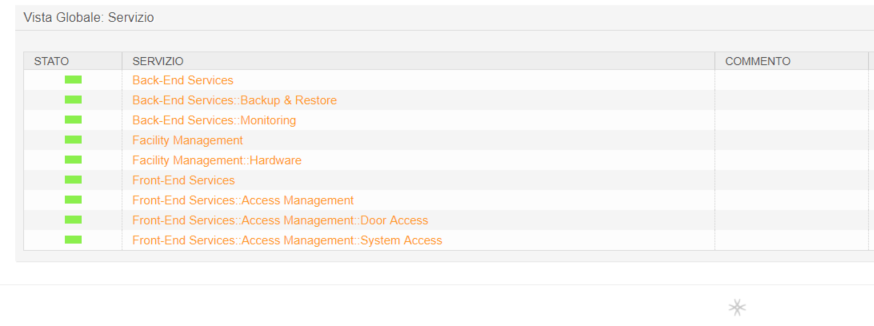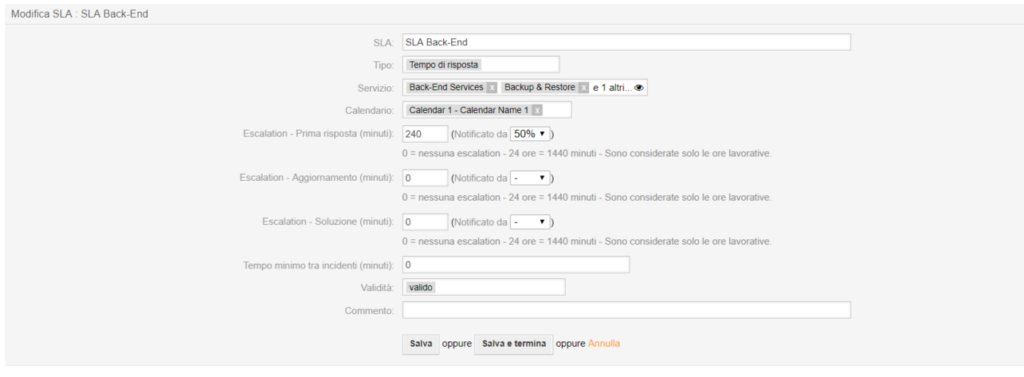Service Catalogue and Service Level management
“A database or structured document which contains all the information regarding the entire IT services in production, including those ready for deployment”




The main goals
1
Complete
Supply one source of consistent information for all the services supplied.
2
Accessible
Make information in the catalogue widely available.
3
Updated
Make sure that the information in the catalogue is up-to-date and properly maintained.
Example of Service Catalogue management with Rexpondo
To create the Service Catalogue ITIL suggests identifying the following data for each service identified:
- Name and service description
- Type of service
- Any support services
- Business Owner
- Service manager
- Impact on Business
- Active SLA
- Time and availability of service
- Contact for any incident escalation
- etc.
The service catalogue is part of the service portfolio and contains information regarding two types of IT services:
- Business Service Catalogue: which groups together the services visible to clients;
- Technical Service Catalogue: the list of support services required by the service provider, which are indispensable for delivering the services visible to the client.
An example can be the subdivision in two macro areas: Front-End and Back-End with which to identify and classify all the services for which it is intended to provide assistance.
The image below shows an example of the overview of the Service Catalogue with the Rexpondo interface.

Finally, it should be noted that for a complete assessment of impact, it is good practice to have a CMDB (Configuration Management DataBase) that collects information related to CI (Configuration items) and their relationships.
Service Level management
The ITIL definition of this process is: “maintain and gradually improve the alignment and quality of IT services, through a constant cycle of agreements, monitoring, reporting and revision of IT service achievements and through the implementation of actions to eliminate unacceptable levels of service”.
Main Goals
“Maintain and gradually improve the alignment and quality of IT services, through a constant cycle of agreements, monitoring, reporting and revision of IT service achievements and through the implementation of actions to eliminate unacceptable levels of service”
Communication
Quality
IT services supplied.

Less costs
IT services.
It is easy to see the direct impact of Service Level Management on the alignment and the improvement of quality of the services, respecting the pre-set cost limits.
It is a process that actively involves both the customer and the supplier. The former is driven to define their needs, while the latter is driven to provide coherent answers. This is the basis for the definition of SLAs (Service Level Agreements) between customers and providers.
Example of Service Level management with Rexpondo
For each service in the Service Catalogue the relative SLA can be defined, i.e. agreements made between suppliers and customers that must be monitored at fixed time intervals.
Below is shown the creation of a SLA regarding one or more services.
- Start by entering a SLA by defining the type, the services which will be connected to it, the time scale and the escalation timing.

(Regarding the type of SLA to create, Rexpondo permits the choice between a predefined set).
- Once created, the new SLA can be found on the summary page

Other insights
Change management
Methods and procedures for managing changes in the IT infrastructure.
Service Asset e Configuration Management
Methodically manage information regarding the IT structure.
Knowledge management
Quality of services offered, knowledge and information sharing.
Would you like to know more?
Find out how Rexpondo can help you implement ITIL in your company.